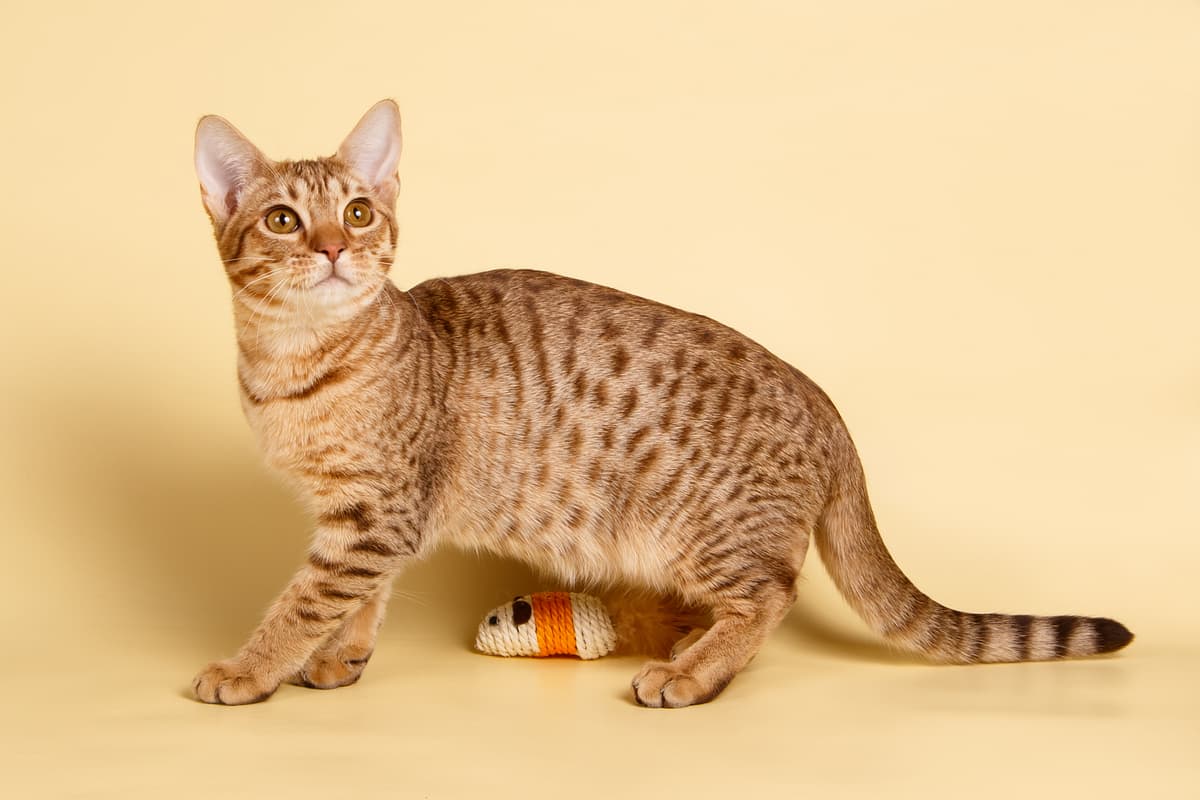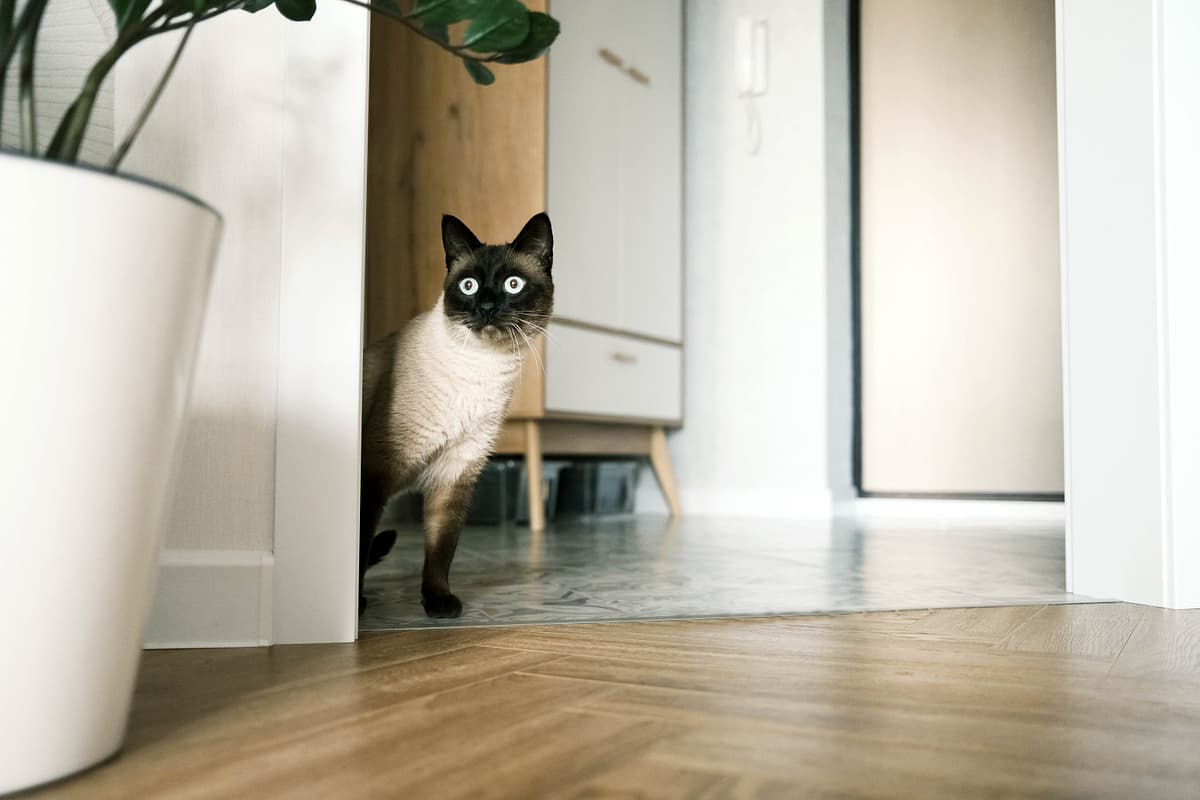Ocicat vs Siamese
Discover the differences between Ocicat and Siamese to make the best choice for your situation.
Try different breeds

Ocicat
Strikingly spotted and athletic, this cat thrives on interaction and play. Affectionate and intelligent, the Ocicat bonds closely with families and adapts well to active homes.

Siamese
Striking blue eyes and a sleek, short coat set this affectionate breed apart. Social, vocal, and playful, Siamese cats thrive on companionship and interaction.
Quick comparison
Medium
4–6.5 kg
Shorthaired, satin-like
12–15 years
3–5 kg
High energy
Medium
3.5–5.5 kg
Shorthaired, fine-textured
12–16 years
2.5–4.5 kg
High energy
Personality & behavior
Compare the personality traits and behavioral characteristics of both breeds.
Ocicat
Enjoys human company and social interaction
Learns quickly and solves problems easily
Active and needs regular physical activity
Loves interactive games and chasing toys
Adjusts well to new people and environments
Siamese
Enjoys people and bonds closely with owners
Learns quickly and solves puzzles with ease
Highly active and thrives on daily activity
Loves games and interactive play sessions
Adjusts well to new environments and changes
Care needs
Exercise, grooming, and daily care requirements
Ocicat
Hypertrophic cardiomyopathy, periodontal disease
Siamese
Progressive retinal atrophy, respiratory issues
Suitability
How well each breed fits different living situations and families
Ocicat
Good option
Sociable and trainable, Ocicats usually adapt well to first-time cat owners.
Very suitable
Ocicats are active but adjust well to indoor apartment environments with enough stimulation.
Perfect fit
Their playful and energetic nature matches the activity level of busy households.
Great choice
Friendly and tolerant, Ocicats generally interact well with young children.
Highly compatible
They typically get along with other pets due to their outgoing temperament.
Not ideal
Ocicats dislike being alone for long periods and may develop behavioral issues.
Siamese
Good option
Affectionate and social, Siamese cats are generally easy for beginners to understand
Excellent fit
Their playful nature suits smaller spaces as long as they receive enough attention
Highly suitable
They enjoy interactive play and thrive in active, engaging environments
Usually good
Siamese cats are social but may be sensitive to rough handling by very young children
Works well
They often get along with other pets if introduced properly and given attention
Not recommended
Siamese cats become lonely and stressed if left alone for extended periods
Breed strengths
What each breed excels at and their best qualities
Ocicat
- Highly social and people-oriented
- Intelligent and quick to learn tricks
- Playful and energetic throughout adulthood
- Generally healthy with few inherited issues
- Gets along well with other pets
Siamese
- Affectionate and bonds closely with owners
- Highly intelligent and quick to learn
- Social and enjoys interactive play
- Communicates needs with distinct vocalizations
- Sleek, low-shedding coat requires minimal grooming
Challenges & considerations
Potential challenges and considerations for each breed
Ocicat
- Prone to boredom without mental stimulation
- Can become vocal if left alone
- Needs regular interactive play sessions
- May develop attachment to one family member
- Requires early socialization to avoid shyness
Siamese
- Prone to separation anxiety if left alone
- Can be overly vocal and demanding
- Sensitive to changes in environment or routine
- Needs frequent mental and physical stimulation
- Susceptible to dental and respiratory health issues
Ready to choose your perfect breed?
Learn more about each breed or compare other breeds to find the perfect match for your lifestyle.
Discover more helpful tools
Make use of our other free tools to get the most out of your pet experience
